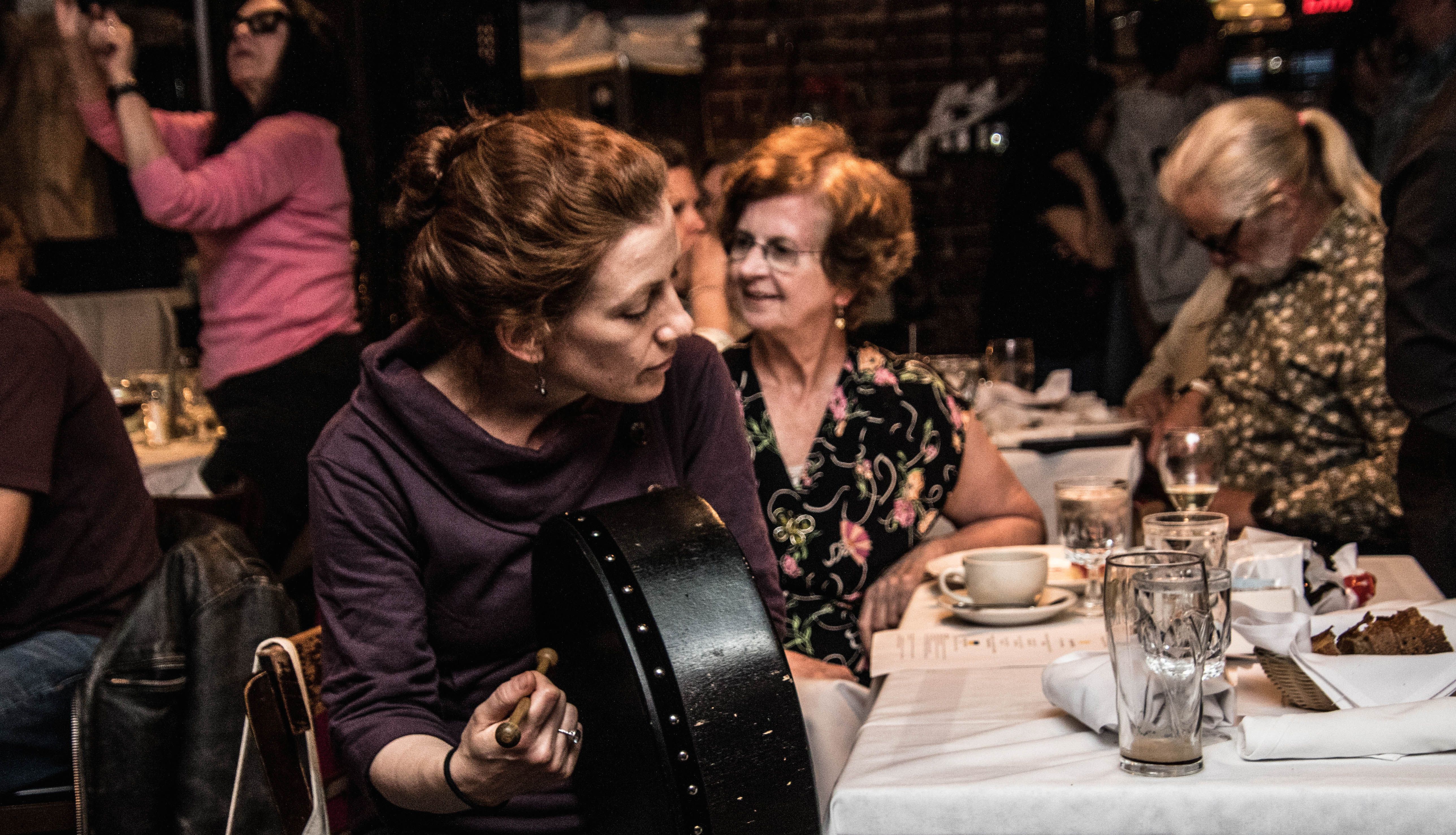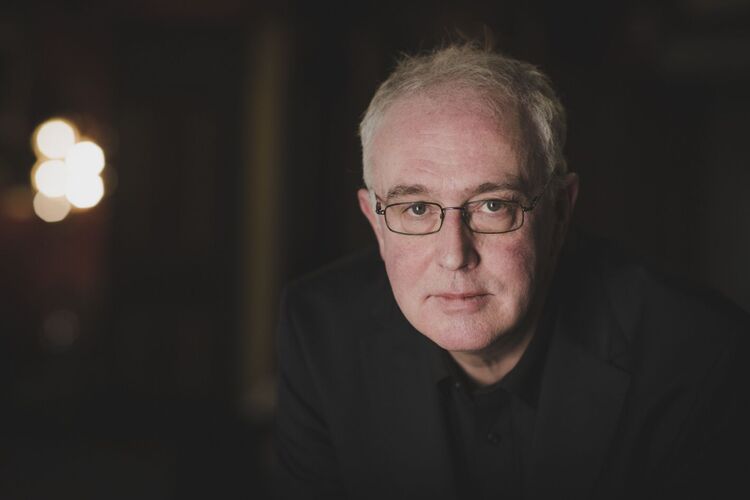One of four Celtic Fire Festivals, Bealtaine celebrates fertility and the beginning of summer in Ireland and other Celtic lands. The word “Bealtaine” meaning “bright fire” refers to the bonfire lit by a presiding Druid in Ireland’s past. Young people jumped the fire for luck in finding a spouse, travelers jumped the fire to ensure a safe journey, cattle were driven between two fires to protect them from disease and everyone danced around the fire. A traditional céilí dance called “Rince Mór na Tine” (Bonfire Dance) is a favorite of mine.
Nollaig na mBan NY team members and friends didn’t have a bonfire last Monday, May 1, but we did have candles on the table at The Landmark Tavern on 11th Ave in the Big Apple. We chose the restaurant because we want to support venues where traditional Irish music can be enjoyed. We brought in the summer season at the home of Don Meade’s Blarney Star Monday night session (blarneystar.com). Don, and his featured musician of the evening, Mary Courtney, honored us by being our guests for dinner. (Mary Courtney & Patrick Madden are at Le Cheile every 1st & 3rd Sunday monthly: www.lecheilenyc.com; marycourtneymusic.com.)
During the meal, participants presented stories and poems honoring the Bealtaine theme, summer and its messages of love, joy, hope and reawakening. The lovely imagery in Bernadette Cullen’s poem, “Like Light Like Water” reflects the idea that life is a circle, rain is just the other side of sunlight; when you are in a difficult place, hold out your hands, wait and when the circle turns again, healing and new life will begin.
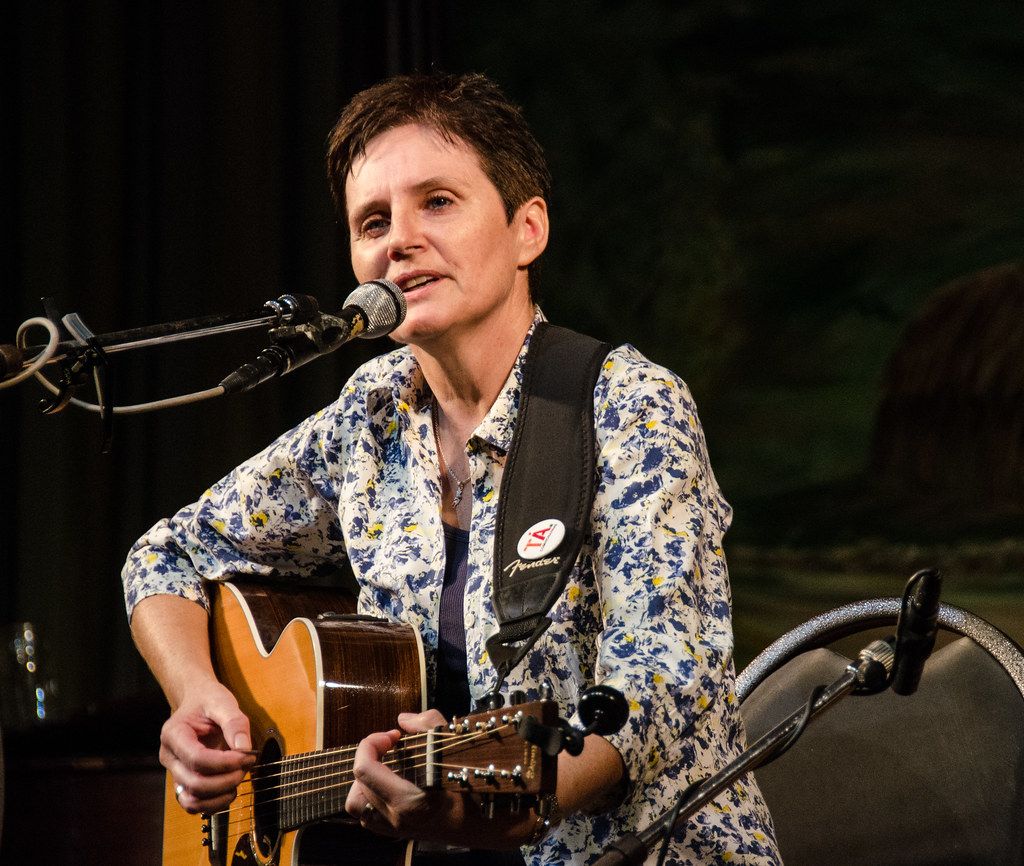
Mary Courtney.
Rebirth and hope was reflected also in a story read by Allyce Fucigna called “The Day Shay Got To Play.” The story tells of the kindness and love shown by a group of baseball players to a child with disabilities. In her lovely introduction Allyce talked about looking to children for hope and promise.
Margaret McCarthy’s poem “What The Smell of Boxwood Promised,” from her book, “Notebooks From Mystery School,” was a beautiful reflection of the sense of anticipation and the sensual promise that early summer brings. Her poem was a reminder that in early times, young lovers spent the eve of Bealtaine in the forest and it was believed that if you bathed with the Bealtaine morning dew, your beauty would flourish throughout the year. Another long-ago custom was the scattering of yellow flowers, such as buttercups, marigolds, and primroses around the outside of each home. It was thought that these flowers would bring luck to the household. Most of the old customs have died out but Sean Nós dancer Edwina Guckian posted on Facebook that that she decorated a hawthorn with her children to celebrate the festival this year. I have fond memories of picking wild flowers to make buttercup and daisy chains on Bealtaine.
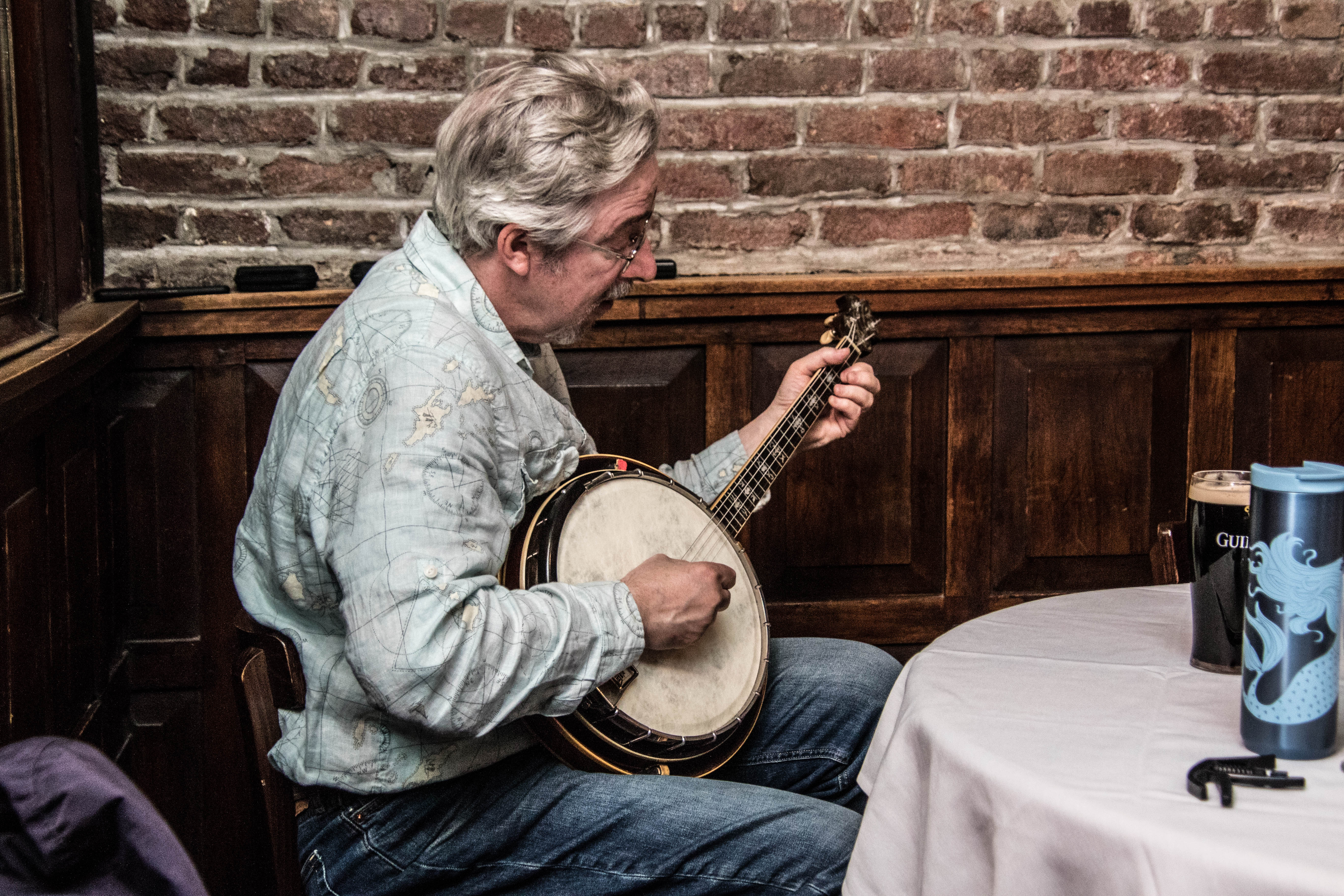
Don Meade.
Speaking of childhood, Dee Nolan reminisced about a family reunion one summer long ago when wild flowers were in bloom. The story she told brought to life a childhood memory when, for the first time since emigrating from Dublin as a small child, she returned to Ireland with her mother. Dee relished the time with the relatives she saw in family photos. Her emotional telling of the story was a reminder of the deep connection between joy and sorrow.
And as a reminder that Bealtaine is the time to fully celebrate the turning of the seasons toward the sun and light. Nancy Oda reflected on Yeats’s poem, “The Stolen Child.” The boy in the poem had to make a choice between staying in the real world and going with the fairies. “The real world may be full of problems but we must also see its goodness in dance, flowers, the rising of the sun, and the people with whom we gather to celebrate life,” Nancy said.
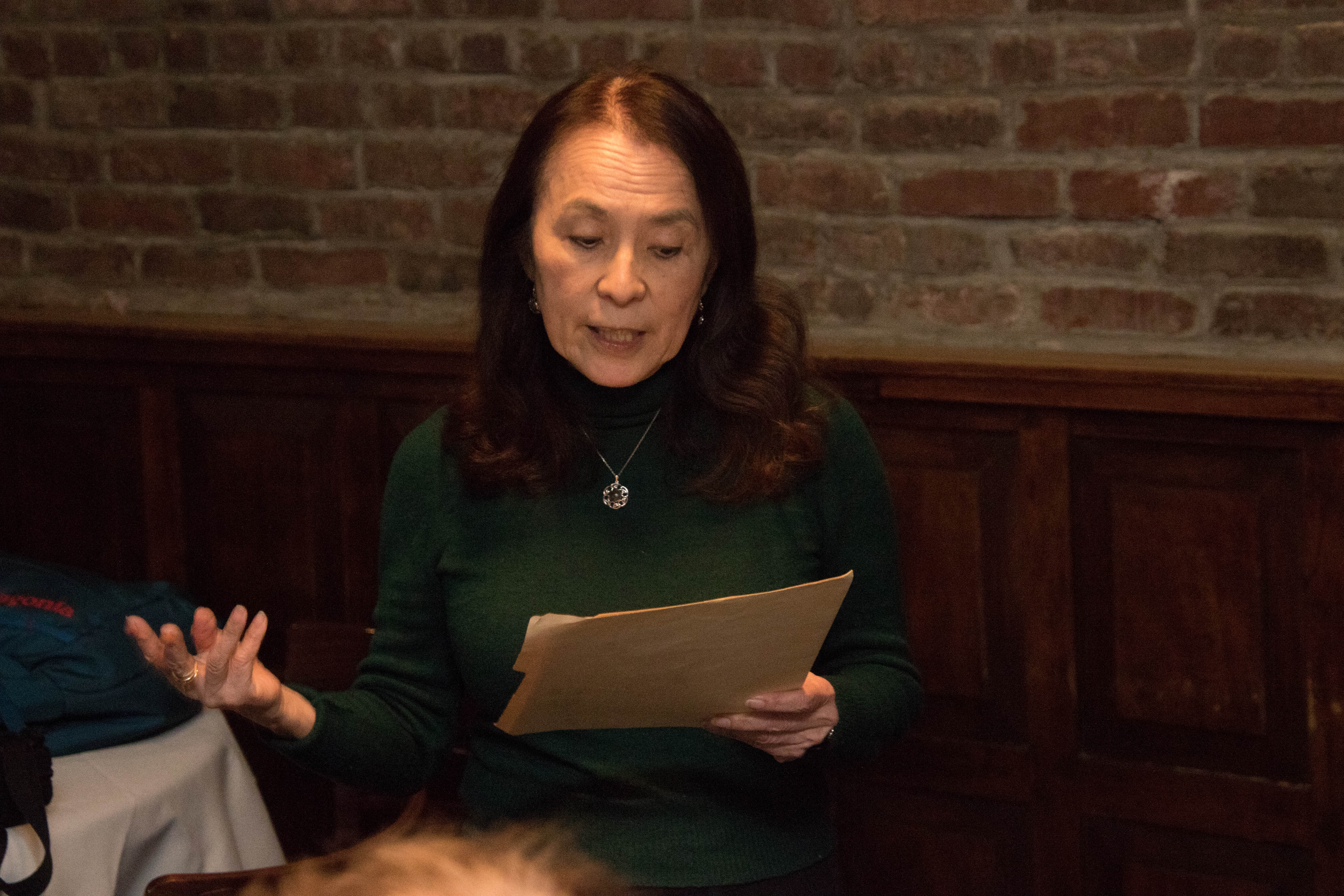
The May magic continued after dinner when Don Meade* started his music session with a hornpipe called, “The First of May.” Feet were tapping when two well-known flautists Linda Hickman and Eileen Goodman joined Don. The crescendo rose with Bernadette Fee bringing her usual skillful magic from the strings of her fiddle and Beth Higgins on the bodhrán joined in. Brian Kennedy gave us a tune on his new six-hole cedar flute. The melody he played came to him as a result of his listening to a tune called “The Lakota Love Song” he told us.
Mary Courtney’s first song, “Come by the Hills” brought us back to the roots of the festival we were celebrating. She also gave us the wonderful song “Samaradh Samaradh” (Summertime, summertime). Mary’s rendition of “The Lake Isle of Innisfree” brought a hush to the dining room that made me wonder who along with myself was quietly wishing to arise and go and find that peace and beauty that Yeats wrote about
“I will arise and go now, for always night and day I hear lake water lapping with low sounds by the shore;
While I stand on the roadway, or on the pavements grey,
I hear it in the deep heart’s core.”
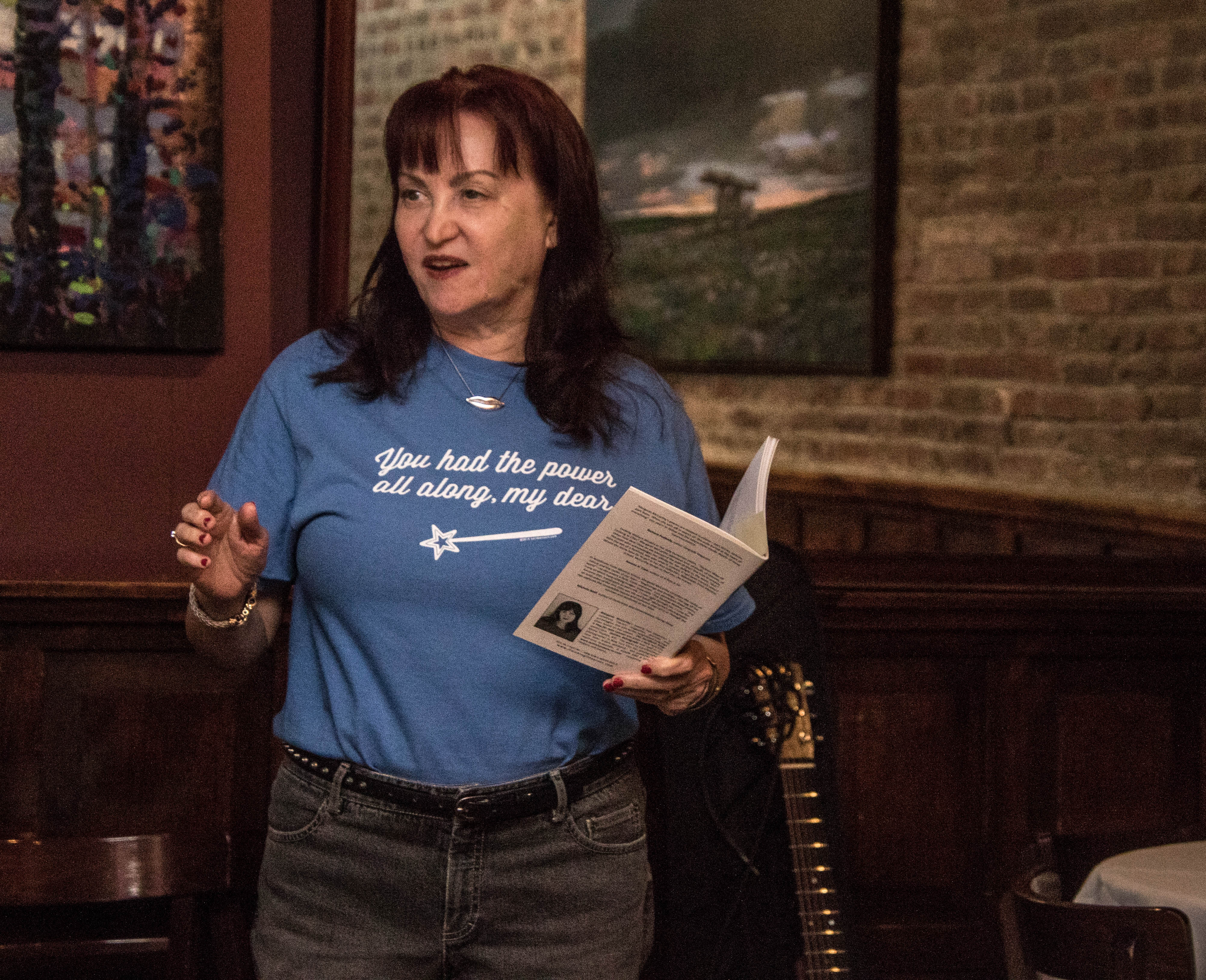
Margaret McCarthy.
In addition to supporting venues where traditional music has a voice, Nollaig Na mBan NY urges support for the struggle in Ukraine. If you are looking for a way to donate, please check out https://www.veselka.com/support-ukraine/ Also Sunflower of Peace Foundation: https://www.facebook.com/sunflowerofpeace.
Founder of Nollaig na mBan NY, Maura Mulligan is author of the memoir, “Call of the Lark.”

